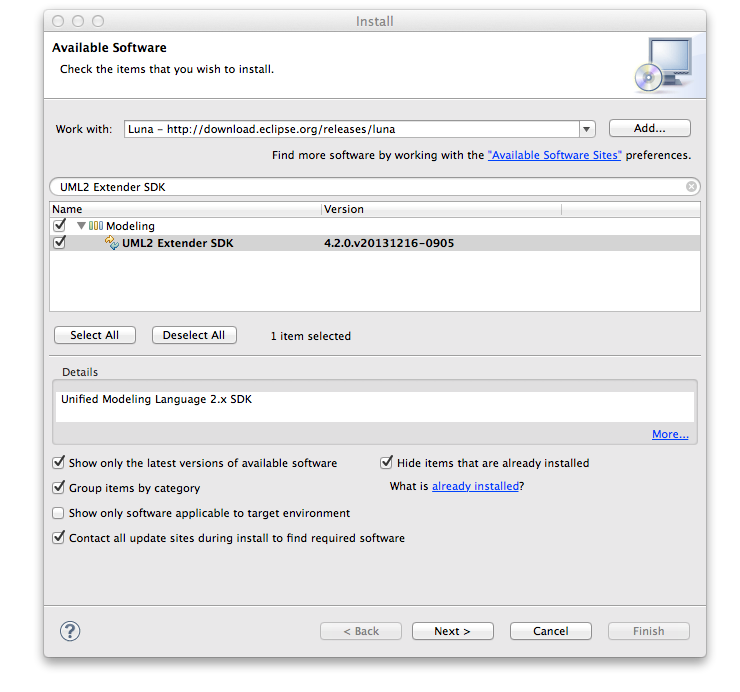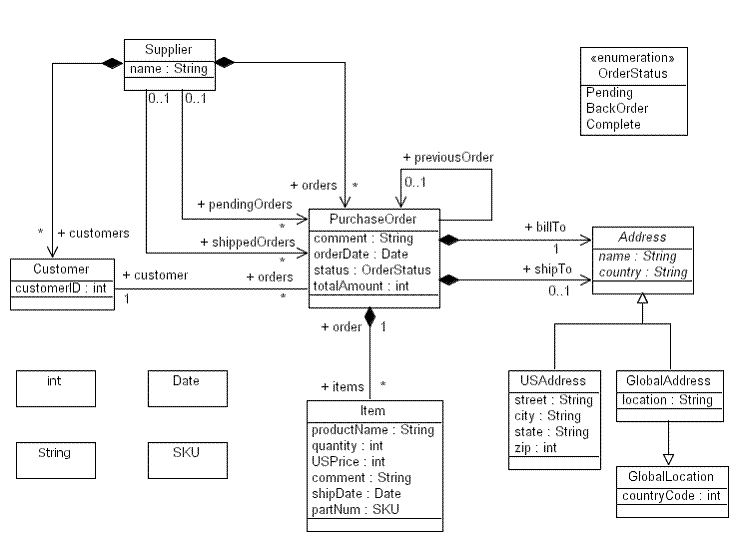Notice: this Wiki will be going read only early in 2024 and edits will no longer be possible. Please see: https://gitlab.eclipse.org/eclipsefdn/helpdesk/-/wikis/Wiki-shutdown-plan for the plan.
MDT/UML2/Introduction to UML2 Profiles
Copyright © 2004, 2011 International Business Machines Corp. and CEA
Summary
This article describes how to work with profiles using the UML2 plug-ins for Eclipse. In particular, it gives an overview of how to create and apply profiles (and their contents) both programmatically and by using the sample UML editor.
Kenn Hussey and James Bruck
Last Updated: October 12, 2011
Prerequisites
To start using UML2 (and to follow along with the example in this article), you must have Eclipse, EMF, and UML2 installed. You can either download the Modeling Tools Package or follow these steps:
- Download and run Eclipse.
- Select the Help > Install New Software… menu item.
- Select a software site to work with, e.g., Indigo - http://download.eclipse.org/releases/indigo.
- Expand the Modeling tree item.
- Select UML2 Extender SDK and press the Next > button.
- Review the install details and press the Next > button.
- Accept the terms of the license agreement and press the Finish button.
- Restart Eclipse when prompted to do so.
At this stage, UML2 and all dependencies should be installed.
Introduction
This article will walk you through the basics of creating and applying profiles using UML2. Using a subset of the Ecore profile (see below) and the model we described in the “Getting Started with UML2” article [1] (the ExtendedPO2 model, shamelessly “borrowed” from the EMF “bible” [2]) as an example, we’ll look at what’s involved in creating some of the more common elements that make up a profile. For each type of element, we’ll first explain the creation process using the sample UML editor and explore how to accomplish the same thing using Java code. Then we’ll look at what’s involved in applying profiles and stereotypes to models. The ExtendedPO2 model is shown below.
References
[1] K. Hussey and J. Bruck. “Getting Started with UML2”. International Business Machines Corp. and CEA, 2004, 2011.
[2] F. Budinsky, D. Steinberg, E. Merks, R. Ellersick, and T. J. Grose. Eclipse Modeling Framework. Pearson Education, Inc., Boston, MA, 2003.


